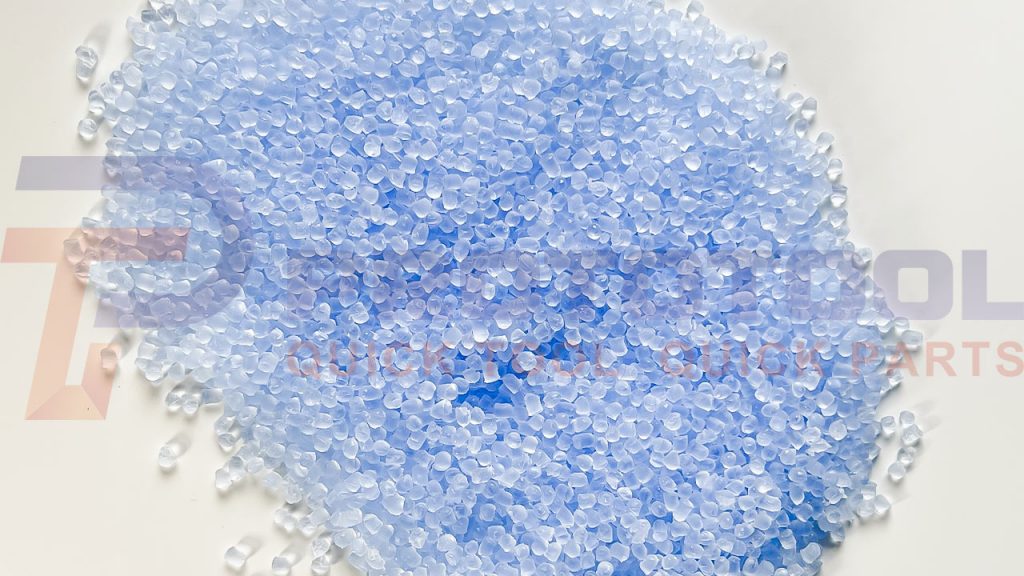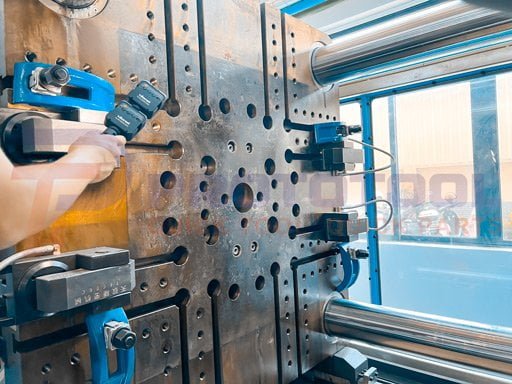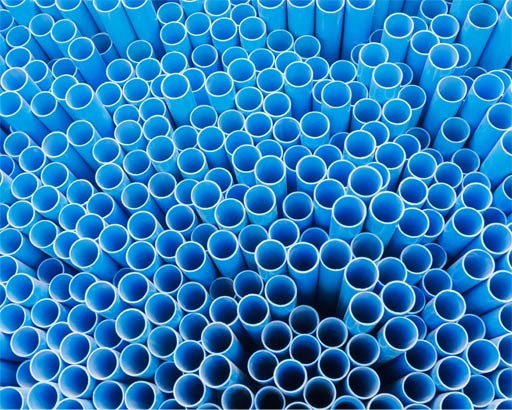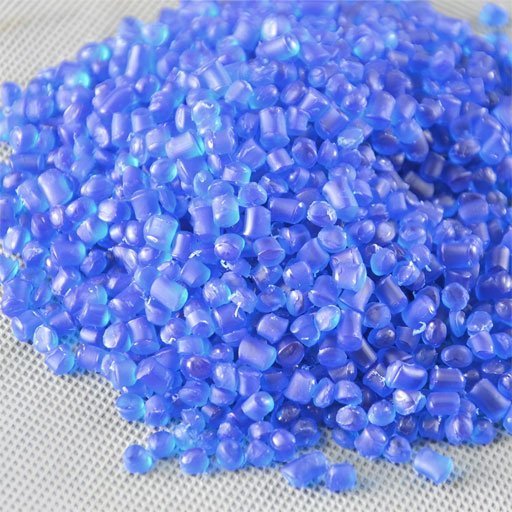PVC-Spritzgießen ist ein sehr kreatives und zuverlässiges Herstellungsverfahren. Mit ihm lassen sich hocheffiziente, langlebige und komplexe Teile mit hoher Präzision und Kosteneffizienz herstellen. Aufgrund seiner massiven Vorteile ist PVC Kunststoff-Spritzguss wird in vielen Industriezweigen für die Teileproduktion bevorzugt.

Was ist Spritzgießen?
Das Spritzgießen ist ein vielseitiges Herstellungsverfahren. Es wird zur Herstellung verschiedener Produkte verwendet, indem geschmolzenes oder verflüssigtes Material in eine Form gespritzt wird. Es ist vielleicht die weltweit am häufigsten verwendete Methode zur Verarbeitung von Kunststoffen.
Das PVC-Spritzgießverfahren besteht aus verschiedenen Phasen. Dazu gehören die Verflüssigung des Kunststoffs durch Erhitzen und das anschließende Einspritzen des flüssigen Kunststoffs unter hohem Druck in eine temperaturgeregelte Form. Zum Schluss wird das Produkt durch Abkühlen verfestigt.
Beim Spritzgießen kann eine Reihe von verschiedenen Materialien verwendet werden. Welches Material verwendet werden soll, hängt von den gewünschten Produkteigenschaften ab. Die am häufigsten verwendeten Spritzgießmaterialien sind jedoch Polyvinylchlorid, Acryl, Nylon, Polypropylen, Acrylnitril-Butadien-StyrolPolystyrol, Polycarbonat, Polyoxymethylen, Polyäthylen usw.
Nun wollen wir uns ansehen, was PVC ist und welche Eigenschaften es hat.

Was ist PVC (Polyvinylchlorid)?
PVC ist eine Abkürzung für Polyvinylchlorid, ein hervorragendes PVC-Spritzgussmaterial. Es ist das am dritthäufigsten hergestellte synthetische Kunststoffpolymer der Welt. Es wird in großem Umfang zur Herstellung verschiedener spritzgegossene Kunststoffwaren und -teile wie z. B. Adapter, Rohre, AV-Komponenten, Computergehäuse und -komponenten usw.
PVC-Polymer wurde erstmals in den 1920er Jahren von der amerikanischen Reifenfirma B.F. Goodrich in kommerziellem Umfang verwendet. PVC ist in zwei Formen erhältlich, nämlich als spritzgegossenes Hart-PVC und als spritzgegossenes Weich-PVC.
Spritzgegossenes Hart-PVC bietet gute Steifigkeit, Flammbarkeit und ausgezeichnete Schlagfestigkeit. Es wird im Bauwesen für die Herstellung von Türen, Fenstern, Rohren, Maschinengehäusen usw. verwendet. Auch Weich-PVC wird im PVC-Spritzguss in großem Umfang verwendet. Die Flexibilität von Weich-PVC kann je nach Bedarf durch Zugabe einer bestimmten Menge verschiedener Weichmacher angepasst werden. Spritzgegossenes Weich-PVC wird hauptsächlich zur Herstellung von medizinischen Schläuchen, Innenverkleidungen von Fahrzeugen, Gartenschläuchen usw. verwendet.
Eigenschaften von PVC-Material
Die Vielseitigkeit von PVC und seine hervorragenden Eigenschaften machen es zu einer beliebten Wahl für PVC-Spritzgussverfahren. Seine Eigenschaften umfassen hohe Schlagzähigkeit, geringere Zugfestigkeit, leichte Formbarkeit, geringere Temperaturbeständigkeit, weniger Starrheit, geringere chemische Beständigkeit, usw.
Spritzgegossenes PVC ist wirtschaftlich, leicht recycelbar und damit umweltfreundlich und hat eine hohe Dichte und große Festigkeit, da wir dieses Polymer verflüssigen können, das als gut geeignetes Spritzgussmaterial dient. Es kann erhitzt, in eine Form gegossen und abgekühlt werden. Aufgrund seiner dauerhaften und hervorragenden Eigenschaften wird es in zahlreichen Kunststoffspritzgussanwendungen eingesetzt.
Tipps: Wenn PVC-Material in der Injektion Heizung Prozess, wenn Sie nicht die Temperatur zu kontrollieren, gibt es eine Wahrscheinlichkeit der Zersetzung und Freisetzung von schädlichen Gasen, so gibt es hohe Anforderungen für die Spritzguss-Verarbeitung.
Kufen und Pforten
Während des PVC-Spritzgussverfahrens können wir alle konventionelle Gatter. Der Angusskanal erleichtert den Übergang des geschmolzenen PVC-Kunststoffs vom Anguss in die Anschnittkammer, und der Anschnitt besteht aus drei Kanälen, die den Ausstoß des Materials in die Kavität des Teils fördern.
Wenn wir kleine Teile herstellen, wird ein Nadel- oder Unterwasseranschnitt empfohlen. Für dickere Produkte ist der Mindestdurchmesser eines Nadel- oder Unterwasseranschnitts Anschnitt sollte 1mm betragenwobei die Dicke des Fächergatters mindestens 1 mm betragen sollte.

Leitfaden zum PVC-Spritzgießverfahren
Es gibt viele Faktoren, die berücksichtigt werden müssen, um PVC-Spritzgussprodukte von optimaler Qualität zu erhalten. Dazu gehören das Design der Form und Temperatur, Einspritzgeschwindigkeit und Druck, Schneckengeometrie und viele andere. Diese Faktoren und wichtige Tipps für den Betrieb werden im nächsten Abschnitt des Leitfadens zum PVC-Spritzgießverfahren behandelt.
Außerdem sollte der Maschinenbediener den Zustand der Maschine überprüfen, um eine ausgezeichnete und fehlerfreie Verarbeitung zu gewährleisten. Im Folgenden werden der vollständige Ablauf der PVC-Spritzgießverarbeitung und wichtige Parameter aufgeführt, die für jede Phase gesondert besprochen werden.
Trocknung von PVC
Spritzgegossenes PVC kann eine geringe Menge an Feuchtigkeit aufnehmen und muss getrocknet werden. Wir können es für eine Dauer von 1,5 bis 2,5 Stunden auf 75 bis 90 °C erhitzen. PVC absorbiert Feuchtigkeit aufgrund der darin enthaltenen Chlorionen.
Enthalten Zusatzstoffe oder Weichmacher
Polyvinylchlorid besitzt eine geringere Wärmestabilität und kann sich bei zu hoher Temperatur oder Scherkraft zersetzen. Um eine Zersetzung des Materials zu vermeiden, werden dem PVC während des Spritzgießprozesses verschiedene Additive oder Weichmacher beigemischt, um eine hohe Hitzestabilität zu erreichen. Andernfalls kann die Zersetzung zu ernsthaften Gefahren für den Bediener und den Endverbraucher führen.
Spritzgegossenes PVC bietet eine hohe Beständigkeit gegen starke Säuren, Oxidationsmittel und Reduktionsmittel. Es kann jedoch abriebfest sein, wenn es in Kontakt kommt mit oxidierende Säuren (z. B. H2SO4).
Verhältnis Länge/Durchmesser der Schnecke (L/D)
Die L/D-Verhältnisist, vereinfacht ausgedrückt, das Verhältnis zwischen der Länge der Schnecke und ihrem Außen- oder Nenndurchmesser. Im Allgemeinen sind die meisten Spritzgießmaschine Hersteller bieten ein L/D-Verhältnis von 19, 20 oder 21:1 an. Einige andere bieten optimierte Maschinen mit einem L/D-Verhältnis von 24 bis 26:1 an.
Schrauben-Kissen
Der Rückstand PVC in der Fassdie sich vor der Schnecke befindet, die nach dem vollständigen Füllen der Form nicht mehr in diese eindringen kann. Formhohlraumwird als Kissen. Die Markierung, an der die Schraube herausragt, wird als Pufferwert bezeichnet. Das Schneckenpolster sollte innerhalb der Grenze von 2-3 mm liegen. Bei größeren Spritzgießmaschinen kann er jedoch höher sein.
Schneckendrehzahl
Die Schneckendrehzahl sollte sein 35-50 U/min in den meisten Szenarien. Aber wir können sie anpassen, wenn es nötig ist.
Schraube Gegendruck
Der Rückschraubdruck wird im Allgemeinen so gewählt, wie vom Hersteller in den Maschinenspezifikationen angegeben. In der Regel liegt er jedoch im Bereich von 60-100 psi.
Einspritzleistung
Die Einspritzkapazität, das Volumen oder die Schusskapazität stellt die maximale Materialmenge dar, die die Schnecke in einem Spritzgießzyklus einspritzen kann. Für allgemeine Anwendungen wird sie in Unzen gemessen.
Temperatur des Fasses
Der Zylinder ist das Gefäß, das für die Plastifizierung des Materials verwendet wird. Er besteht aus verschiedenen Zonen. Er liefert bei Bedarf Druck und Wärme. Eine Kunststoff-Spritzgießmaschine hat in der Regel vier Hauptzylinderzonen, d. h. Einzug, Rückseite, Mitte und Vorderseite. Die Anzahl der Zylinderzonen kann sich jedoch erhöhen.
Denken Sie daran, dass jedes Material unterschiedliche Temperaturen für die Fasszonen erfordert, und prüfen Sie auch das Spezifikationsblatt des Materials. Die Temperaturen für Form, Vorderseite, Mitte und Einzugswalzenbereiche kann sein 30-60 °C, 160-180 °C, 150-170 °C und 140-160 °C.
Sowohl die Temperatur der Form als auch die des Fasses sind für ein effizientes Arbeiten gleichermaßen wichtig. Die Werkzeugtemperatur sollte niedriger sein als die Trommeltemperatur, um eine schnelle Abkühlung des Produkts zu gewährleisten.

Temperatur der Form
Bitte auswählen Temperatur der Form sorgfältig. Es wird empfohlen, die 70-100 °F für das Zulaufwasser, und für die Auswerferseite sollte die Temperatur 10-20 °F weniger.
Lagertemperatur
Die Lagertemperatur wird mit Hilfe der Schneckendrehzahl, des Schneckengegendrucks und des Heizbands geregelt. Die genauen Werte entnehmen Sie bitte dem Datenblatt. Die Heizbandeinstellungen passen die Fasstemperatur auf 20 Grad weniger als die angegebene Lagertemperatur. Die Düsentemperatur wird ebenfalls um 10 Grad niedriger sein als die empfohlene Lagertemperatur.
Einspritzgeschwindigkeit
Die Einspritzgeschwindigkeit sollte anfangs langsam bis mittelschnell sein, um eine Zersetzung des spritzgegossenen PVC zu vermeiden, und bei Großserienproduktionen weiter erhöht werden. Bei Produkten, die glatte, dicke Wände erfordern, sollte die Geschwindigkeit später von langsam auf höher erhöht werden.
Einspritzdruck
Einspritzdruck hängt von der Größe und Form des Produkts sowie von der Größe der Anschnittöffnung ab. Sie hilft dabei, das geschmolzene Material durch die auf die sich hin- und herbewegende Schnecke ausgeübte Kraft in die Form zu drücken. Etwa 20-40 Prozent des maximal verfügbaren Wertes ergeben die ideale Konsistenz.
Sie können Qualitätsprodukte herstellen, wenn Sie diesen Leitfaden für das PVC-Spritzgießen befolgen. Die genauen Werte für Ihre PVC-Spritzgießmaschine entnehmen Sie bitte dem technischen Datenblatt des Herstellers.
Industrielle Anwendung des PVC-Spritzgießens
Die wichtigsten Industriezweige, die PVC-Spritzguss verwenden, sind im Folgenden aufgeführt:
- Automobilsektor
- Konsumgüter - Wasserbecher (prüfen Sie die Becher-Umspritztechnik), Waschbecken und andere Produkte, die in direkten Kontakt mit dem menschlichen Körper kommen, sind verboten.
- Baugewerbe
- Sektor Elektronik
- Medizinischer Sektor
- Industrielle Produkte
- Verpackung und Abfüllung von Getränken
Die Vorteile des Kunststoffspritzgießens
Das Spritzgießen ist die beste Wahl für die Kunststoffindustrie und Unternehmen, die Kunststoffteile herstellen, da es viele Vorteile bietet. Kostengünstige Produktion, Effizienz, Konsistenz, Erschwinglichkeitund Haltbarkeit sind nur einige zu nennen. Lassen Sie uns mehr ins Detail gehen:
Wirtschaftliche Produkte
In den letzten Jahren haben Fortschritte bei den Kunststoffpolymeren und der Spritzgusstechnik dazu geführt, dass die Spritzgusstechnik eine wirtschaftliche Wahl für Industrie und Unternehmen geworden ist. Revolutionäre Werkzeugtechniken ermöglichen es uns, eine beliebige Anzahl von Massenprodukten aus einer einzigen Form und einem einzigen Gussverfahren herzustellen.
Kompliziert geformte Teile
Einer der wichtigsten Vorteile von Kunststoffformen ist, dass sie die Arbeit mit extrem komplexen geometrischen Strukturen und engen Toleranzen ermöglichen. Ein großer Dank an die Kunststoffspritzgusstechnik. So können im Vergleich zu anderen Massenproduktion Mit dieser Technologie können Sie hochkomplexe Formteile mit weniger Aufwand präzise herstellen.
Riesige Materialoptionen
Der nächste Vorteil auf der Liste ist, dass das Kunststoff-Spritzgussverfahren eine große Vielfalt an Kunststoffen bietet, um allen Anforderungen an das jeweilige Produkt gerecht zu werden. Wenn das betreffende Kunststoffteil beispielsweise eine hohe Festigkeit aufweisen oder schwer entflammbar sein muss, stehen verschiedene Kunststoffmaterialien zur Verfügung, um diese Anforderungen zu erfüllen.
Ebenso bieten einige Materialien Kratzfestigkeit, Haltbarkeit, Schmierfähigkeit oder sogar optische Diffusion. Kurz gesagt: Kunststoffformen bieten eine große Auswahl an Kunststoffen, die den unterschiedlichen Anforderungen der Produkte gerecht werden.
Hohe Präzision
Ein weiterer Vorteil des Spritzgussverfahrens besteht darin, dass es eine Massenproduktion von Kunststoffteilen mit extrem hoher Präzision ermöglicht. Diese Technologie ist zur idealen Wahl für viele Anwendungen geworden, bei denen Präzision von größter Bedeutung ist, denn sie bietet Toleranz so eng wie +/-0,000015.
Vielseitige Veredelungsmethoden
Das Kunststoffspritzgießen bietet im Vergleich zu anderen kostengünstigen Massenproduktionsverfahren einen erheblichen Vorteil mit vielen vielseitige Veredelungsmöglichkeiten. Dazu gehören Hochglanzpolitur, Grafiken, außergewöhnliche Texturen, Gravuren usw. Wenn die Form richtig nachbearbeitet wird, müssen die fertigen Kunststoffteile nicht mehr nachbearbeitet werden. Daher ist die vielseitige Nachbearbeitung eine weitere entscheidende Eigenschaft des Spritzgießens.
Bietet Wiederverwertbarkeit und Umweltfreundlichkeit
Schließlich ist das Kunststoffspritzgießen eine umweltfreundliche Technologie, die die Abfallproduktion drastisch reduziert. Denn alle oder zumindest die meisten Kunststoffabfälle werden wiederverwertet, so dass nur wenig oder gar kein Abfall entsteht. Das schont nicht nur die Umwelt, sondern spart auch eine Menge Geld. Diese Technologie schont also die Umwelt.
Schlussfolgerung
PVC-Spritzguss ist die ideale Wahl für hervorragende wirtschaftliche Qualitätsprodukte. Spritzgegossenes PVC hat viele physikalische und chemische Eigenschaften; die meisten Eigenschaften eignen sich für die Herstellung verschiedener Produkte.
Dieser Artikel befasst sich hauptsächlich mit dem Leitfaden für das PVC-Spritzgussverfahren, seinen verschiedenen Eigenschaften und den Vorteilen von spritzgegossenem PVC.










